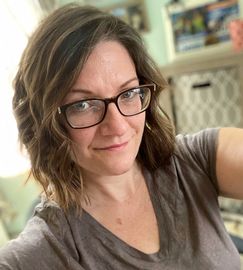- About Us
- Advertise / Support
- Editorial Board
- Contact Us
- CancerNetwork.com
- TargetedOnc.com
- OncLive.com
- OncNursingNews.com
- Terms & Conditions
- Privacy
- Do Not Sell My Information
- Washington My Health My Data
© 2025 MJH Life Sciences™ and CURE - Oncology & Cancer News for Patients & Caregivers. All rights reserved.
Caregivers Affected Significantly by Brain Cancer-Related Cognitive Dysfunction

The cognitive dysfunction that patients with glioblastoma often face can compound these challenges and ultimately put extra stress on caregivers.
From taking care of everyday tasks like laundry and transportation to managing important health care decisions, caregivers of patients with cancer help their loved ones through the countless challenges that come with diagnosis and treatment.
However, the cognitive dysfunction that patients with glioblastoma often face can compound these challenges and ultimately put extra stress on caregivers, according to preliminary results of a recent study presented at the American Society of Clinical Oncology (ASCO) Palliative Care Symposium on November 16-17.
Glioblastoma is an aggressive type of brain cancer with a relatively poor prognosis and a high incidence of cognitive dysfunction in those it affects, including issues with memory, language problems and confusion. To better understand how this dysfunction impacts the burden that caregivers of patients with glioblastoma face, researchers from Utah, Florida, Ohio, Colorado, New Hampshire, California, North Carolina and Minnesota conducted a multisite study.
“The study includes a prospective survey of caregivers and a retrospective data extraction of clinical and treatment characteristics of patients whose caregiver agrees to take the survey,” lead author Trang H. Au, PharmD, MPH, faculty member at the Pharmacotherapy Outcomes Research Center (PORC) at the University of Utah, explained in an interview with CURE.
The 20- to 30-minute survey asks the caregivers about their demographics, the perceived cognitive state of their loved one and associated burden of care, such as the impact on caregiver emotions, daily life, health needs and work and finances.
The preliminary results presented at the symposium contained data from three sites: Duke University, the Huntsman Cancer Institute and the University of California Los Angeles. Survey responses from 54 caregivers and 48 patient-caregiver pairs were included.
Of patients, 74 percent were male, while 84 percent of caregivers were female. Patients were primarily unemployed and being treated for their initial diagnosis, while in the caregiver group, 42 percent of respondents were currently employed, and 32 percent received no additional help.
In the caregiver group, 48 percent of caregivers reported performing more than one caregiving task (such as meal preparation) before diagnosis compared to 97 percent after diagnosis.
When asked about the side effects of diagnosis and treatment, 90 percent of caregivers reported that their loved ones experienced memory problems in the past 14 days prior to filling out the survey.
“Caregivers were asked about specific manifestations of cognitive dysfunction and the degree to which these symptoms affected them on a daily basis,” Au explained. “For example, if a caregiver reported observing ‘memory problems,’ then they were asked how ‘trouble remembering recent events,’ ‘forgetting names of friends’ or ‘misplacing items’ affected the caregiver’s daily life.” Ultimately, 71 percent of caregivers said that their loved ones’ trouble with remembering recent events interfered with their daily life.
Next, on a scale from zero (none) to 10 (significant), caregivers were asked to rank how each instance of cognitive dysfunction affected various facets of their life, such as emotional health, general health, ability to work at their job and quality of life. A majority (60 percent) indicated a score of 5 or greater, while 23 percent indicated 8 or higher.
Only 23 percent of caregivers felt that enough is being done to understand their needs.
Given these preliminary results, enrollment in the study will continue at five sites through Spring 2019 in an effort to collect more data. According to Au, “Future directions for additional research include validating the survey, performing the study throughout community cancer centers in the U.S. and/or developing the survey into a longitudinal tool to measure caregiver burden over time in order to implement interventions to support caregivers.”
Related Content:



